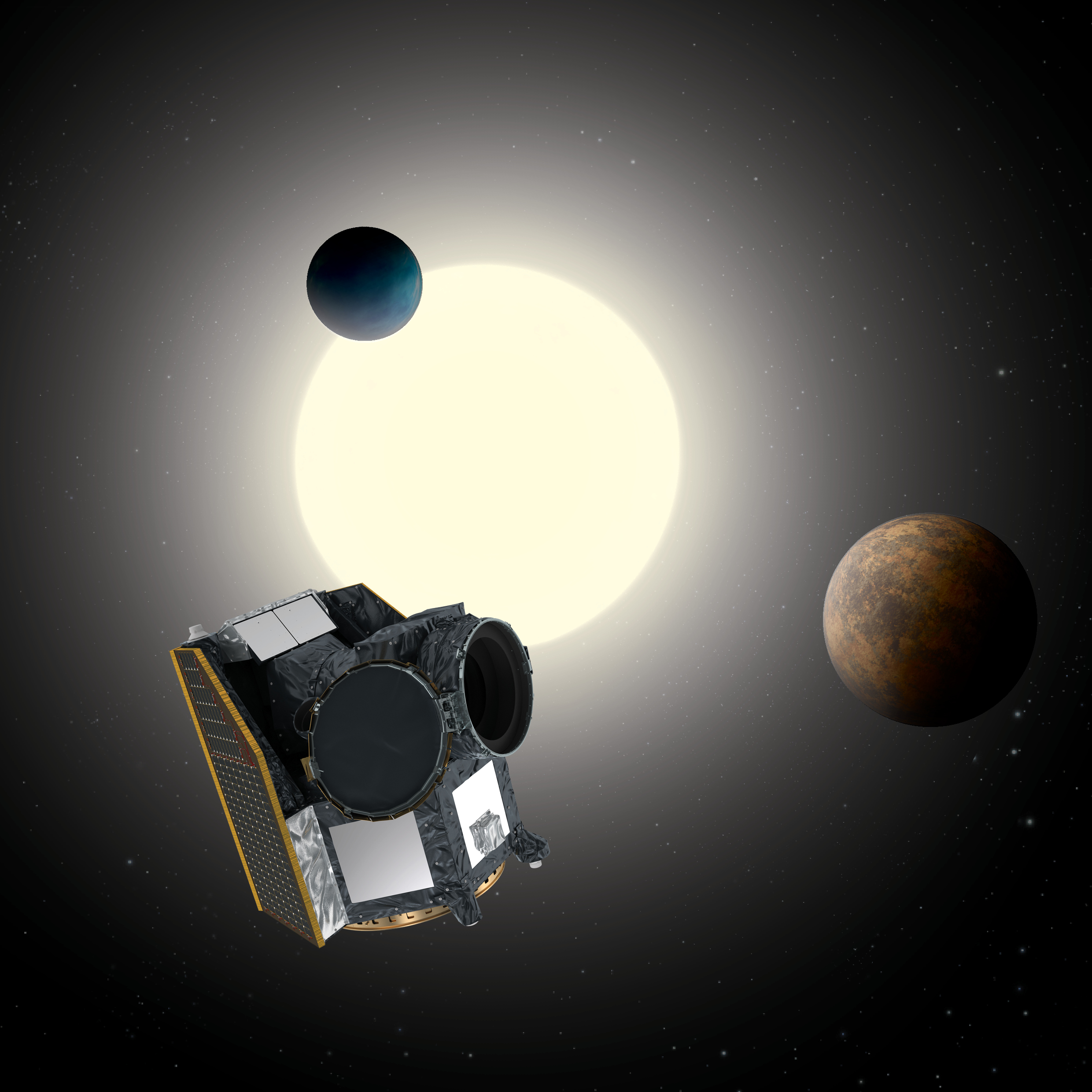Mission Overview - CHEOPS
Mission Overview
The European Space Agency's (ESA's) Characterising Exoplanets Satellite (CHEOPS) is the first space mission designed for searching for exoplanetary transits and occultations on bright stars already known to host planets by performing ultrahigh precision photometry.

CHEOPS is an ESA mission implemented in partnership with Switzerland, through the Swiss Space Office (SSO). The University of Bern leads a consortium of 11 ESA Member States contributing to the mission and represented in the CHEOPS Science Team. ESA is the mission architect responsible for overall mission definition and procurement of the spacecraft and launch.
ESA is also responsible for the early operations phase executed by the spacecraft contractor, Airbus Defence and Space–Spain (ASE). In addition, ESA is responsible for running the CHEOPS Guest Observers (GO) Programme, a competitive and peer-reviewed process, through which the science community can apply for 30% of science observations time in the first extended mission (which was 20% during the nominal mission).
The science instrument is led by the University of Bern, with important contributions from Austria, Belgium, Germany and Italy. Other contributions to the science instrument, in the form of hardware or science operations, are provided by Hungary, France, Portugal, Sweden, and the United Kingdom. CHEOPS was launched from Europe's spaceport in Kourou, French Guiana on 18 December 2019 on a Soyuz rocket operated by Arianespace. Following a successful in-orbit commissioning of the spacecraft, responsibility for operations was taken over by the CHEOPS Mission Consortium, with the Mission Operations Centre under the responsibility of INTA, Spain, and the Science Operations Centre led by the University of Geneva, Switzerland.
This website was last updated on 25 March 2025.








































 Sign in
Sign in
 Science & Technology
Science & Technology